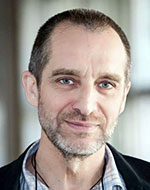
Alexander Lvovsky
Researcher, Department of Chemistry and technology of rare and dispersed elements and nanoscale composite materials. K. A. Bolshakov, MIREA - Russian Technological University
Alexander Lvovsky was born in Moscow in 1953. After graduating from high school he entered the Moscow Institute of Fine Chemical Technology named after Lomonosov in 1970. In 1976, after successfully defending his thesis, he was distributed to work at the Department of Chemistry and Technology of Rare and Dispersed Elements in a problem laboratory on the subject of processing niobium-tantalum containing raw materials. The department has gone from an engineer to a researcher. In 1983 he began to combine scientific work with teaching. In 2005, he changed the direction of scientific work and began researching dispersed systems on the LS 13320 analyser. Currently he continues to work at the Department of Chemistry and Technology of Rare and Dispersed Elements and Nanoscale Composite Materials. K.A. Bolshakov. He is the creator and the head of the laboratory of research of dispersed systems. His main research interests are dispersed systems based on rare and dispersed elements, theory and practice of dispersion analysis by laser diffraction.
Laser particle size analyser - an innovative solution for dispersion analysis in enrichment and reprocessing.
On the need to measure particle sizes in the mining industry and in the processing of ore and non-metallic materials. Methods of size measurement and comparison of methods (physical principles), limitations – sieve analysis, sedimentation, microscopy. Fundamental problems of particle size measurement. Equivalent diameter. The shape factor of the particles. The data representation PROTOCOL. Comparison of results according to the Protocol. Normative documents-standards regulating the full cycle of the study of dimensional characteristics of dispersed materials: sampling and preparation of drugs, analysis, methods of presenting the results (reports). The technique of laser diffraction: theory and practice. Comparison with other methods: sieve analysis against laser diffraction. Features of the type of distribution of particles, very different from the sphere. Application of dispersion analysis results for development and operational control of grinding, flotation, filtration and gas treatment processes.
